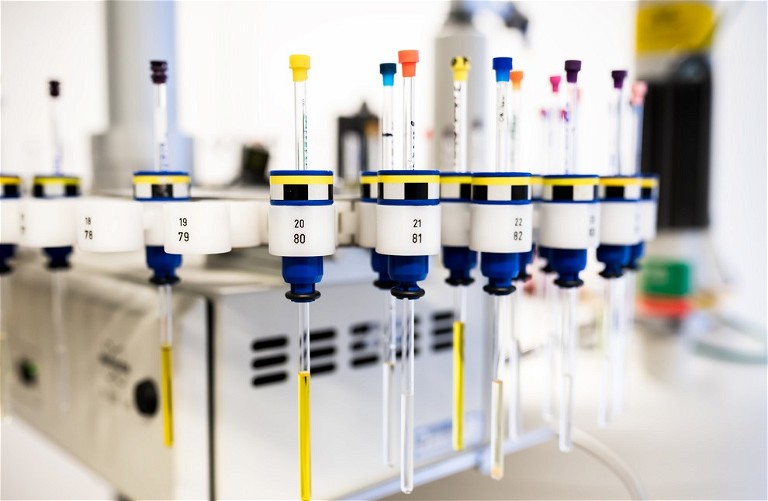Analytics: Nuclear Magnetic Resonance Spectroscopy
Enhancing Reaction Understanding in Pharma: The Role of Nuclear Magnetic Resonance
The pharmaceutical industry is seeking new ways to accelerate the drug development process, to generate both time and cost savings. How is nuclear magnetic resonance spectroscopy helping to improve the drug development sector?
By Markus Ziegler at Bruker BioSpin
As the demand to bring drugs to market faster continues to rise, the pharmaceutical industry is experiencing unprecedented growth. According to Statista, the 2020 revenue for the global pharmaceutical companies was upwards of $1.2tn; 49% of this revenue share was in the North American market.1 A recent industry report predicts that pharmaceutical manufacturing will grow rapidly with a compound annual growth rate of 11.34% by 2028.2
The benefits of nuclear magnetic resonance (NMR) spectroscopy are starting to make significant inroads in the drug development sector, where the method can give valuable new insights to support research into the molecular structure of elements, chemical reactions and other dynamic processes. The non-invasive and non-destructive process provides both functional and anatomical information.
NMR In Change Control
In the highly regulated pharmaceutical sector, effective change control management is central to ensuring that policies and procedures are followed throughout any required process change. Change control has long been used as part of good laboratory/manufacturing practice (cGxP), but accounting for it is not always easy, especially when many elements that go into the drug discovery and development process are subject to change at any moment. Factors that make NMR suitable for quality assessment in a cGxP environment include high reproducibility from site to site, high chemical specificity and the absolute qualitative nature of the technique.

A change is defined as any modification needed to any part of the research process, from the equipment to product labelling. Changes can be classified either as major or minor. Major changes include alterations to the makeup of the product, a new design of a critical aspect of the project or moving to another site that will impact the overall nature of the manufacturing process. These changes require regulatory approval. Minor changes include modifications to analytics or upgrading equipment to a newer model.
A pharmaceutical company is required to control any change to established processes, meaning the changes must be reviewed, recorded and approved by the quality control (QC) department. Given the unpredictability of the research process, implementing change control systems is essential to demonstrate a structured approach towards managing and documenting change, tracking change and providing an audit trail and demonstrating compliance with FDA regulations.
'Factors that make NMR suitable for quality assessment in a cGxP environment include high reproducibility from site to site, high chemical specificity and the absolute qualitative nature of the technique'
A New Use of NMR in On-Line and In Situ Reaction Monitoring
The long established at-line approach to analysing a chemical reaction with NMR has been to extract a sample from the reaction for analysis in a central analytical laboratory, an intrusive and labour-intensive practice with slow cycle times running to tens of minutes.
On-line NMR monitoring has brought the process in-house. It accelerated the process by sampling the reaction directly and circulating it through the NMR system, typically in under a minute. On-line monitoring allows the compositional information to be collected from the chemical processes in real time, gathering kinetic data. Having the ability to gather multiple data simultaneously, during the reaction, provides a unique insight into what happens as the steps during the drug development process are completed.
A more recent development is in situ reaction monitoring using Fourier Transform Infrared (FT-IR) technology, which is set to deliver dramatic time savings. Reactants are mixed and pumped directly into the NMR probe through a capillary in under a second, via a flow tube design that acts as an accelerator for the reagents to bypass additional and more complicated procedures. In total, this process takes less than 130 milliseconds. This remarkably short time period enables very fast reactions to be tracked via NMR spectroscopy. The high reproducibility and accurate temperature control during experiments are further advantages of this approach.
Enhancing Reaction Understanding
The complementarity of NMR and IR spectroscopy, and the use of NMR, can be used to improve the understanding of the synthesis of an active pharmaceutical ingredient (API) precursor. In an experiment examining the reaction of 3-methylhexanoic acid, Meldrum’s acid and pivaloyl chloride, traditional methods of analysis were not possible because of the reagents’ decomposition with temperature. Using FT-IR, 1D1H, 2D NMR spectroscopy, a previously unknown peak that both increased and decreased during the reaction was identified to be pivalic anhydride intermediate – leading to the discovery of a second mechanistic pathway. The combination of these methodologies allowed researchers to gather high-quality quantitative data that captured the real-time and on-line behaviour during the reaction. Moreover, this supported a better understanding of the reaction that forms Meldrum’s acid adduct (IV), the first step in the production of an API.
Incorporating NMR Into Research
On-line reaction monitoring with NMR provides the opportunities for gathering kinetic information closer to the start of the reaction, monitoring the reaction in real time, integrating more techniques into the analytic process and combating traditionally confounding mechanisms in practice (like stirring or temperature issues). NMR, when used as a standalone method and alongside other analyses, can help to identify and characterise reactions where previous techniques have failed.

Markus Ziegler is senior director of Group Marketing at Bruker BioSpin
Markus has more than 15 years of experience in the life sciences, medtech and pharmaceutical industries. A highly skilled collaborator and facilitator, Markus works closely with senior colleagues across Bruker to provide innovative and high-value life sciences research and diagnostics solutions, taking a pivotal role in enabling NMR solutions in the applied markets. With his extensive expertise and passion for driving innovation, Markus consistently helps customers achieve their goals.